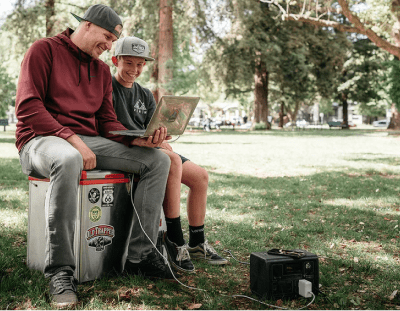The gradual rise of solar power use has prompted a lot of solar panel providers to upgrade their offers. Aside from discounts and bundles, several types of solar panels have emerged as well to provide buyers with more options aside from traditional fixed solar panels. For larger or more advanced solar setups, many users pair their systems with 48V lithium batteries, which provide higher voltage capacity and improved efficiency for demanding power applications.
VoltX 12V 130W Fixed Solar Panel
Among these new solar panel technologies are solar blankets. Also referred to as solar mats, these are a type of foldable solar panels that look like a picnic blanket when folded out. They usually have a cord for connecting to the regulator and Outbax batteries but in terms of function, these are pretty much the same as conventional panels. Pairing them with 100Ah lithium batteries is ideal for compact setups, offering reliable energy storage that’s easy to manage during short trips or weekend getaways.
The question now is which one should you get? Is there a recommended type for certain applications? Read on to find out everything you need to know about solar blankets just before you hit the store and get yourself one.
Solar Panels Vs. Solar Blankets: Which One Is Better?
Solar panels can either be fixed or portable. Solar blankets have their perks in terms of portability as well, which makes it even more confusing to decide which one to get, especially if you've recently switched to solar energy use.
Portable solar panels are most advantageous for those who enjoy the outdoors occasionally. If you're away for the weekend or a day trip only, this and a good battery pack can power most of your needs. The best thing about this is that you can easily transfer it and angle it towards the sun for better charging efficiency. For long-haul travellers or those running multiple appliances, 300Ah lithium batteries provide the extended power storage capacity needed for uninterrupted energy use while off-grid.
BUNDLE DEAL - VoltX 12V 100Ah Lithium Battery + 12V Battery Box

Fixed solar panels are better for avid outdoor lovers. Set it up on your RV and forget about it you're pretty much done and the only thing you need to do is make sure you park it somewhere with ample sunlight. This is also where the downside happens since not all campsites have available sunny spots every time.
Frequent travellers with limited space around their vehicles have solar blankets as their best pick. These are very space-savvy and can simply be hung on your awning or draped over your trailer. Fold it up after charging and store it easily anywhere in your RV.
Did You Know?
Solar blankets are commonly associated with swimming pools. This is because they share a name with most solar pool cover rollers and pool blankets. Aside from popular solar mats brands such as the Kings solar blanket and Redarc solar blanket, numerous pool covers will also come up when you search for solar blankets online.
VoltX 12V 200W Folding Solar Mat
What Should You Look For When Buying Solar Blankets?
Material
As much as possible, go for a solar blanket with monocrystalline cells. These are the most efficient type of solar cells and are space-efficient too, perfect for RV owners. There are other types of solar cells that are more affordable such as polycrystalline and thin films, but these are not as efficient, especially in the long term.
Size
Sizing solar blankets is not that much different from sizing a regular solar panel setup. They come in different sizes too, so it's best to calculate your power requirements before deciding whether to go for a 200W solar blanket, a 300W solar blanket, etc. There's no use having the best kind of solar mat if it's not the correct size to be able to run your essential appliances throughout your entire camping duration.
Weight
If you're concerned about lugging a bulky, heavy solar power source, then you're in luck with solar blankets. These are usually on the lighter side but you still want to check their weight to make sure it's well-suited to the type of vehicle and amount of space you have.
Quality
Solar blanket quality is mostly seen in service life and performance. Solar panels have an average lifespan of about 25 years, so see to it that you get something close to this and with a good warranty offer as well. Also, opt for a 15% to 21% efficiency rate to ensure you get the most out of your solar mat especially during off grid camping.
Design
This one's up to your camping preferences. Want something with support legs for easy angling? Or maybe one with multiple ports for convenient connections? You get to decide which extra features you want for your solar mats, so make sure you list down the specs that would be most useful for you.
Ready to go solar blanket shopping? Forget searching for solar blanket camping and head straight to Outbax instead. You'll find a massive range of solar panels here including solar mats and even the popular flexible solar panels!
VoltX 12V 100W Flexible Solar Panel
Outbax solar panels are shade-tolerant. This means they feature bypass diodes which provide a pathway for the current in case one of the solar cells is shaded. It ensures superior efficiency as it allows your solar system to continue generating energy even at a reduced voltage.
If you're looking for batteries to pair your solar blanket with, you can get one from our lithium battery section too. There are even offers for solar panels and battery bundles with included solar charge controllers/solar regulators for huge savings on your next outdoor adventure.






